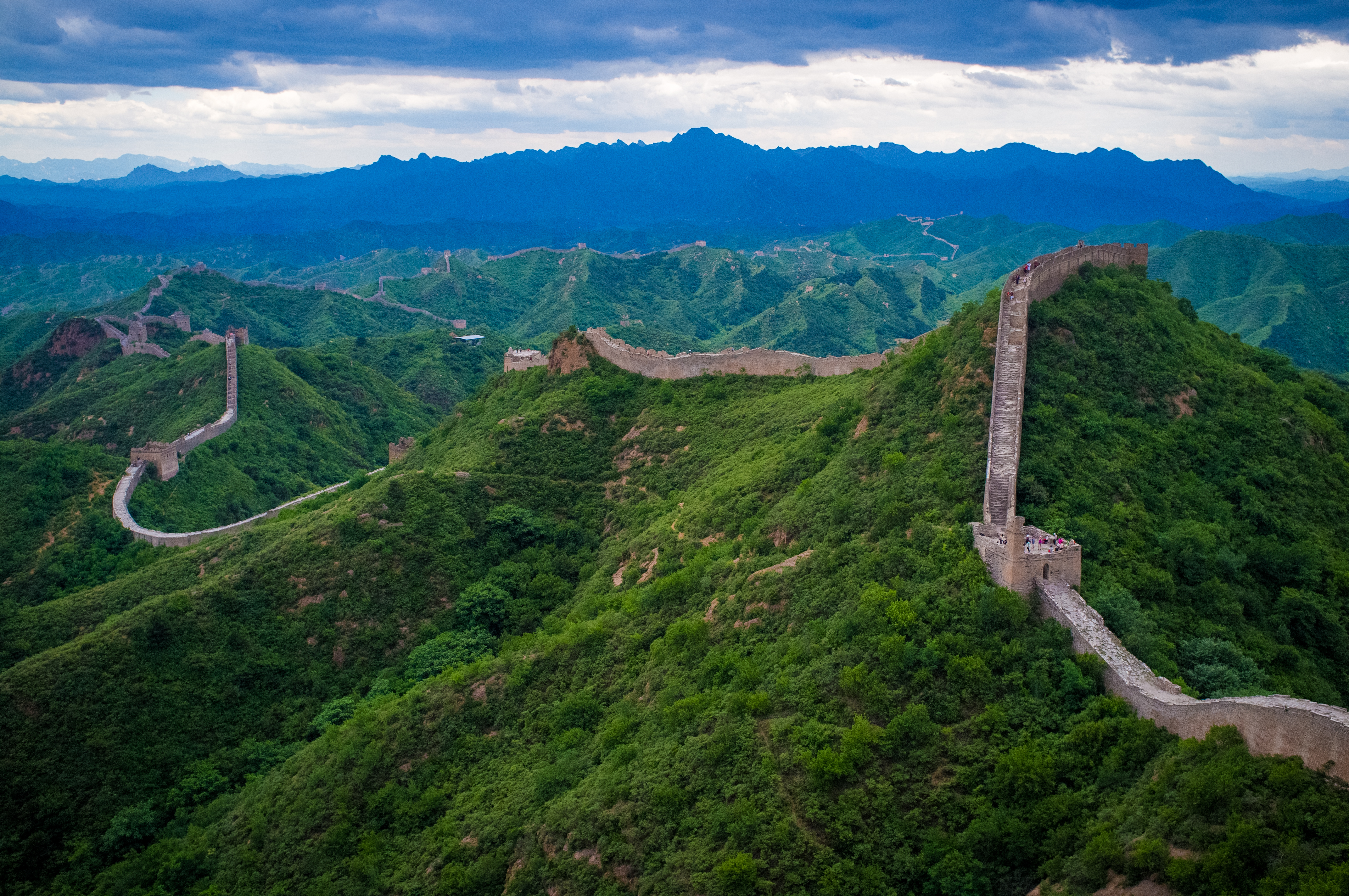The Great Wall of China is a series of fortifications made of stone, brick, tamped earth, wood, and other materials, generally built along an east-to-west line across the historical northern borders of China in part to protect the Chinese Empire or its prototypical states against intrusions by various nomadic groups or military incursions by various warlike peoples or forces. Several walls were being built as early as the 7th century BC; these, later joined together and made bigger and stronger, are now collectively referred to as the Great Wall. Especially famous is the wall built between 220–206 BC by the first Emperor of China, Qin Shi Huang. Little of that wall remains. Since then, the Great Wall has on and off been rebuilt, maintained, and enhanced; the majority of the existing wall is from the Ming Dynasty.
Other purposes of the Great Wall have included border controls, allowing the imposition of duties on goods transported along the Silk Road, regulation or encouragement of trade and the control of immigration and emigration. Furthermore, the defensive characteristics of the Great Wall were enhanced by the construction of watch towers, troop barracks, garrison stations, signaling capabilities through the means of smoke or fire, and the fact that the path of the Great Wall also served as a transportation corridor.
The main Great Wall line stretches from Shanhaiguan in the east, to Lop Lake in the west, along an arc that roughly delineates the southern edge of Inner Mongolia. A comprehensive archaeological survey, using advanced technologies, has concluded that the Ming walls measure 8,850 km (5,500 mi). This is made up of 6,259 km (3,889 mi) sections of actual wall, 359 km (223 mi) of trenches and 2,232 km (1,387 mi) of natural defensive barriers such as hills and rivers. Another archaeological survey found that the entire wall with all of its branches measure out to be 21,196 km
The Great Wall, one of the greatest wonders of the world, was listed as a World Heritage by UNESCO in 1987. Just like a gigantic dragon, the Great Wall winds up and down across deserts, grasslands, mountains and plateaus, stretching approximately 8,851.8 kilometers (5,500 miles) from east to west of China. With a history of more than 2000 years, some of the sections are now in ruins or have disappeared. However, it is still one of the most appealing attractions all around the world owing to its architectural grandeur and historical significance.
Chinese Name: 长城/万里长城
Chinese Pinyin: Cháng Chéng/Wàn Lǐ Cháng Chéng
Construction Period: About 2,000 years from the Warring States Period (476 BC - 221 BC) to Ming Dynasty (1368-1644)
Chinese Pinyin: Cháng Chéng/Wàn Lǐ Cháng Chéng
Construction Period: About 2,000 years from the Warring States Period (476 BC - 221 BC) to Ming Dynasty (1368-1644)
Best Time to Visit The Great Wall Of China:
The best times are spring and autumn, especially May, September or early October when it is usually sunny, with brisk temperatures, leaving you more refreshed and comfortable.
Although it is hotter, June to August is an alternative, as the tourist season is in full swing. November to April is always bitterly cold with biting winds, when the Great Wall encounters few, if any, tourists.
Although it is hotter, June to August is an alternative, as the tourist season is in full swing. November to April is always bitterly cold with biting winds, when the Great Wall encounters few, if any, tourists.
Transportation:
Great Wall of China has different sections since it is over 20,000 KM long. Some important portion and how to get there are:

